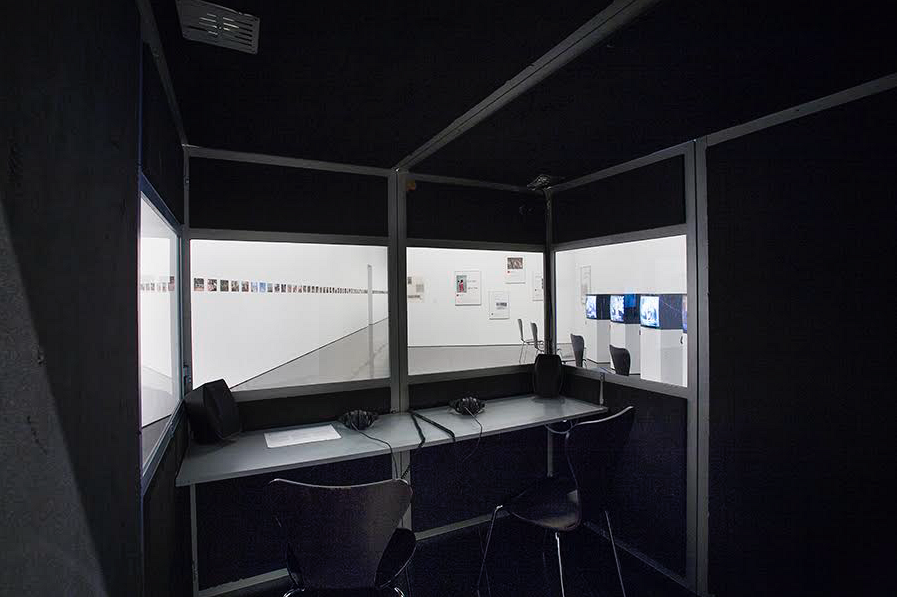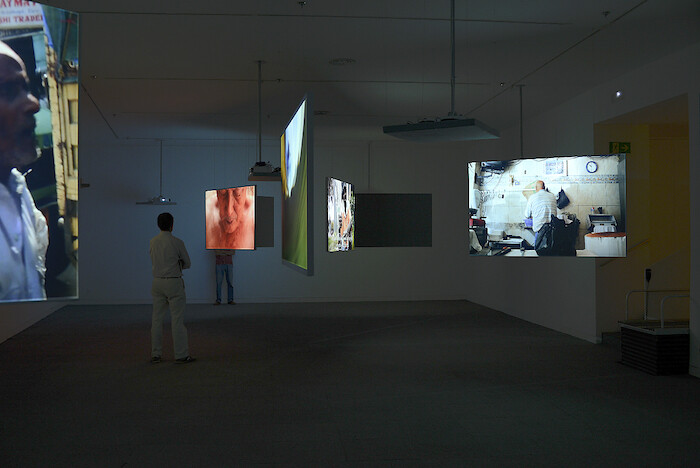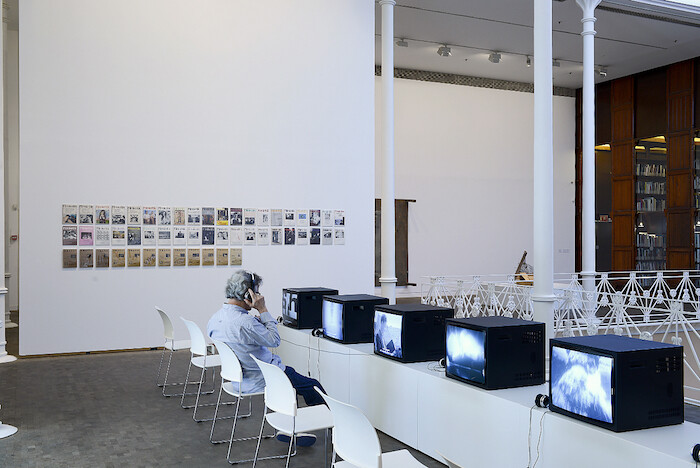Barcelona’s Loop art fair, which started in 2003, is the oldest and most established initiative to assert the commercial potential of film and video. The medium’s ephemeral nature, and its associations with the very different market values of cinema, have contributed to a continued reluctance from collectors, attracted by the aura of more traditional art forms. Paradoxically, these tricky market credentials have recently endowed the moving image with a critical cachet in institutional art spaces and museums. As the institutional assimilation of practices traditionally seen as marginal, and oppositional, to the art market continues—from experimental film to the documentary—the instrumental role of film and video takes on a significant historical resonance in art discourse. In order to assign value to this wayward and ambiguous media within the context of an art fair, Loop has to negotiate a conflicted territory. How to maintain its more market-driven function without appearing to dismiss these historic discourses of disavowal, which will themselves provide validation for the sale of moving image works?
I received the answer at my hotel desk, where I received the exhibition catalogue for “Empathy,” Harun Farocki’s show at the Fundació Antoni Tàpies. The enclosed compliment slip asserts Farocki’s role as a “close collaborator of Loop, whom we would like to pay tribute to,” whilst entreating me to enjoy the fair. By this overt association to a figure paradigmatic for his politically committed film practice, Loop asserts its connection to politically infused discourses of the moving image beyond the market and within the cultural institutions of Barcelona: something that was also apparent in the presence of Malcolm Le Grice and Anthony McCall, both acclaimed for their role in the radical film culture of an earlier period. The hotel is a central venue for Loop. Divested of regular guests, 49 bedrooms similar to the one in which I am staying mutter and flicker, the contours of their bedroom furniture now dimly illuminated by the blue tinted half light of numerous video screens on which commercial art galleries from across Europe, and as far afield as Mexico and Taiwan, present a diversity of moving image works.
The three days of the fair were embedded in what was projected as a citywide event of the moving image, divided into three components: the fair, the festival, and the studies program. This model of dialog on different discursive registers, now common practice for art fairs and film festivals, provided an effective means of situating the market within a wider discourse about the moving image as an artistic and curatorial practice. Exemplary of this was an engaging revisitation of the Centre Pompidou exhibition “Passages de l’Image” (1990-91) by its key protagonists Raymond Bellour and Christine Van Assche in dialogue with the artist David Claerbout. Deftly chaired by Erika Balsom, the conversation resonated with still unresolved matters concerning the dynamics of film as exhibition, and in particular the vexed question of the durational experience of moving image in the gallery where, as Bellour puts it, we are faced with the “disturbing problem” of “conflating different durational experiences” into a space designed for the perambulating pace of the gallery visitor, not the static immersion of the cinema spectator.
Bellour’s problem of durational conflation could be experienced in almost baroque intensity at the art fair itself, where divergent aesthetics, stories, and temporal and sonic registers were condensed into corridors of makeshift bedroom booths. Despite this, an unexpected predominance of slow-paced observational works was evident. Quiet films, such as Escape from North Korea (2009), Chien-Chi Chang’s document of North Korean defectors; The Committee (2014), Pilvi Takala’s engagements with an East End London youth group; the elderly Cuban women Adrian Melis portrayed in their homes in Glorias de un Futuro Olvidado (2016); and Ângela Ferreira’s research into Portuguese colonial history, Adventures in Mozambique and the Portuguese Tendency to Forget (2016), all reflected upon history and politics in ways that were arresting and thought-provoking, and spoke more to the legacy of Farocki than the prosaic business of an art fair might at first suggest.
The geographical reach of the exhibitions in the festival also mitigated any claustrophobia, encouraging a flâneur rhythm which I carried into different gallery spaces as I traversed the city. In contrast to the montage of voices at the fair, the monographic focus of shows such as those of Farocki, Andrea Fraser, and McCall invited a slower pace of assimilation, which allowed me to navigate, and unpick, threads of development across a singular creative practice, albeit of artists already heavily canonized. Fraser’s exhaustive survey at MACBA, “L’1%, c’est moi,” underlined the depth of her enduring study of the play of gender, class, and finance in culture; bringing her appropriation of language and gestures to a grotesque pitch with a rogues’ gallery of museum curators, guides, and assistants. At Fundació Gaspar, I was drawn to a close study of McCall’s diagrams for early works sometimes executed and sometimes imagined, such as Room with Altered Window (1973), Notation of Fire Condition for Batterson College (1973), and Found Solid Light Installation (1974), which plots the location of lighthouses across a map of Britain. These small pencil-shaded studies and diagrams, with their emphasis on mapping and locating, were a fascinating insight into McCall’s roots in Britain’s conceptual art movement, and its rarely acknowledged influence on his later solid light films.
The most memorable encounter was with Farocki. In the galleries at the Fundació Tàpies, the engrossing activities in Labour in a Single Shot (2011-14), his collaboration with Antje Ehmann, spoke the rhythm of human labor across continents, further unpicking a problem that Farocki has present across his career in film essays such as Workers Leaving the Factory in 11 Decades (2006), also on display. Up another flight of stairs, I was struck by the juxtaposition of Antoni Tàpies’ savage canvas Claus i Corda (nails and string, 1969), impaled with nails and threaded with string, beside covers of Filmkritik magazine, for which Farocki was editor and contributor, and a row of monitors showing his first radical documentaries. Set into dialog with the art of another revolutionary, I was reminded again of Farocki’s ambition and commitment to unraveling the political dynamics of film technology and its languages; so that, like Tàpies, he might confront political tyrannies and repressions, whether visible or covert.
It was an encounter that resonated with a festival whose attempt to marry commerce and critical dialogue around a technology which troubles the temporal-spatial dynamics of the gallery bleeds into other discourses and urgencies outside art’s white walls and cultural prescriptions.











